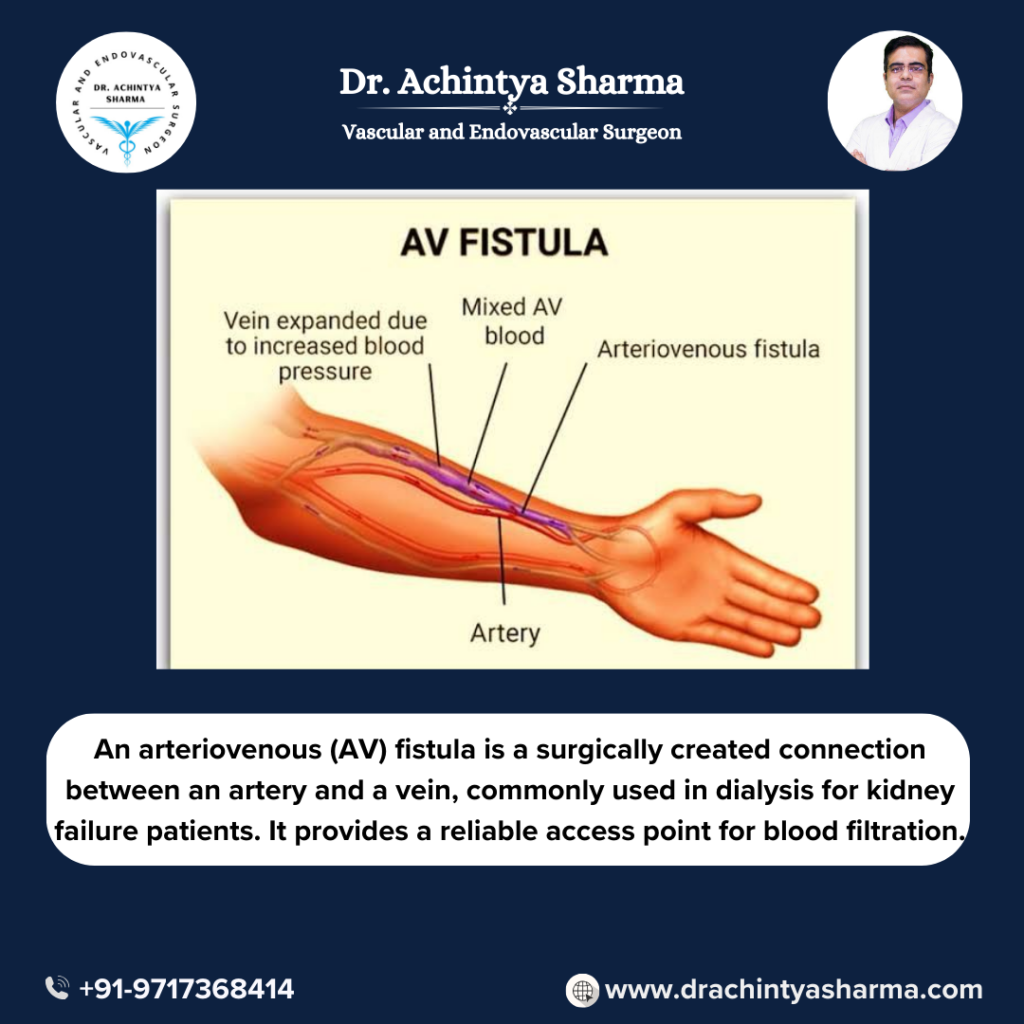AV fistula, is a procedure of fistula surgery for dialysis to crush patients with chronic kidney disease and needing routine dialysis, is one of the most important procedures that those patients need. This surgery puts an artery and a vein directly together to create an access point steadily enduring and strong enough for blood flow. The aim of this guide is to understanding of fistula surgery by discussing its significance, the various types offered, and the four factors that affect the choice of a fistula operation. Thus it facilitates in the process of decision making of the patients as well as their caregivers by clearing off complexes faced during the procedure and also by revealing its benefits. Through many examples and clear explanations, the next article will help people who need to decide their option of the treatment to handle it easily and their life will be more interesting, too.
Fistula Surgery: The Benefits
Fistula surgery for dialysis is a preferred method for vascular access among patients requiring hemodialysis because it:
- Rises blood flow rates, that improve the efficiency of the dialysis process.
- Lowers the chance of infections as opposed to catheters or other dialysis access related devices.
- It remains in while other vascular accesses get expelled from the body.

Types of Fistulas for Dialysis
Two common types of fistulas surgery for dialysis include an arteriovenous (AV) fistula and an AV graft.
1. Radiocephalic Fistula:Synthesizes the radial artery with the cephalic vein,commonly at the wrist mostly.
2.Brachiocephalic Fistula: Surgery which involves the brachial artery and the cephalic vein, usually creating the canal in the elbow area.
Each one of these types is advantageous and most suitable for a particular patient with taking into account the patient’s circulation and overall condition.
The Procedure of Fistula Surgery
As the fistula procedure is quite complicated compared to other surgeries. I will do my best to describe it in detail, starting from the pre-surgery stage and progressing to the post-surgery healing and recovery.
The process of opening a fistula is very straight-forward, but precise and skills as factors of successful result are supposed to be followed. Here’s a simplified breakdown:
1. Preparation: Before fistula establishment, a detailed evaluation of the patient which includes vascular mapping to select the best possible site for anastomosis takes place.
2. Surgery: Involving a local anesthesia, the surgeon implements a mini incision for the access of both sides, which are then sutured together.
3. Recovery:The vein evolves into a matured state over couple of weeks, during which the vein’s wall gets stronger to bear with the needle insertion day by day for the dialysis therapy.
Treating fistula surgery in hemodialysis patients has the following benefits.
- Durability: It is possible that the fistula may last for number of years and thus make it unnecessary to repeat a surgery.
- Efficiency:The improved blood supply makes it possible to do dialysis more effectively.
- Safety: Fewer cardiomyopathy risks and hospital-acquired infections than others.
Potential Risks and Complications
While generally safe, fistula surgery can have complications such as: While generally safe, fistula surgery can have complications such as:
- Blood clots
- Infection
- Failure to mature
Example for Better Understanding
Imagine how John, the patient, felt when he was traumatized to find out that he has been suffering from kidney failure, which is at the age of 54. In the case of John, he rather went for a radiocephalic fistula. His condition also improved considerably after the surgery, and he finally had smooth dialysis sessions, with very low risks of complications and a better quality of life.
Post-Surgery Care
It is highly important to nurse fistula surgery through post-operative care.It includes:
- Surveillance such as satisfying the conditions like redness, swelling or drainage leaking at the surgical site.
- The scheduled evaluation of how well the fistula has now matured and is functioning.
- Protection of the fistula arm from cuts and the bruises to prevent them.
Conclusion
Fistula surgery for dialysis is life-saving for dialysis-dependent people due to its increased efficiency. Knowledge of the classifications, procedures and recovery tips can empower the patients to make the right decision and be ready for a successful surgery. Correct treatment and routinely testing enables a fistula to greatly alleviate the quality of life for patients.
Making complex medical information more accessible through diagrams and statistical data can help patients understand their treatment options and walk into the journey securely in their kidney health. When embarking on this path, it’s crucial to maintain a continuous dialogue with the healthcare providers. It ensures that responses are speedy to any worries and issues and increases the effectiveness of fistula. Overall, fistula surgery for dialysis with a positive mindset can have a significant import on a patient ‘s mental and emotional health.



